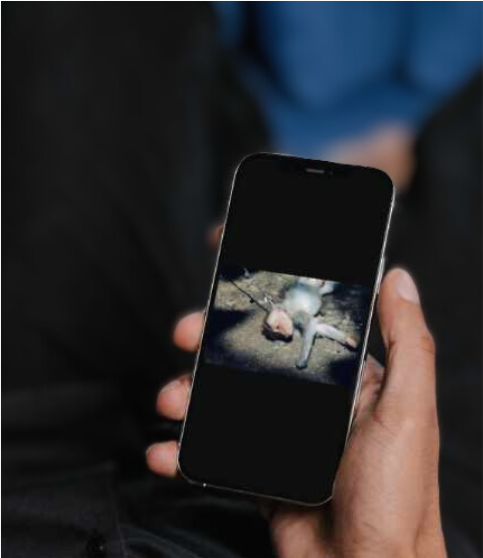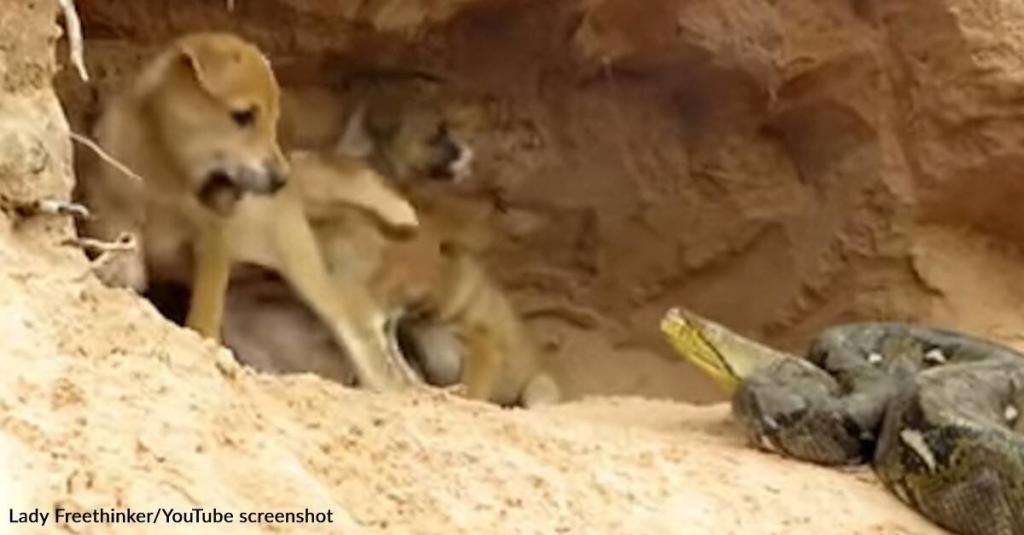

Estimated reading time: 1 minute
Social media continues to be full of fake animal rescue videos that are fooling viewers and causing significant harm to countless animals globally.
We take an in-depth look at the disturbing trend, including a recent report that highlights just how widespread the problem is.
What are fake animal rescue videos?
Fake animal rescue videos have been popular on social media for a few years now and, despite countless animals suffering, the major social media companies are seemingly powerless to stop them.
The creators of the staged rescues often follow a disturbing pattern of deliberately placing animals in dangerous situations, only to ‘rescue’ them on camera.
This not only causes immediate physical and psychological harm to the animals but also perpetuates a cycle of abuse.
They often include the same animals being used over and over again. Most likely until they die.
And it’s usually the same theme; a kitten being eaten by a python, a puppy stuck in a flooded drain, or a deer stuck in a pit.
They involve animals being trapped, attacked, or in distress before being ‘rescued’ (and filmed, of course).
The truth is these ‘rescuers’ are the ones who stage the situations in order to make themselves seem like a hero.
The heartbreaking truth behind animal rescue videos
Animals are often taken from the streets and put in positions where they must fight to protect their babies or other animals.
These videos, often made in developing countries, are designed to be heartwarming, but the truth is they are heartbreaking.
As mentioned above, ultimately, the subject animal will likely die during filming of the fake animal rescue.
In order to get around that, the creators will edit the videos to end them with earlier footage of the animal before they died.
Well-meaning people engage with these videos, which allows the creators to earn a profit, often equating to big money.
Report highlights growing trend of online animal abuse
A recent report by the Social Media Animal Cruelty Coalition (SMACC) highlights just how significant and widespread online fake animal rescue videos are.
The report – by the group comprising 29 animal welfare organisations – highlights the shocking increase and the growing sophistication of those making the videos.
It also details the urgency for social media companies like YouTube, TikTok, and Facebook to take stronger measures to identify and remove such harmful content.
Read SMACC’s report to learn more about staged animal rescues and what needs to be done to stop them.
How to spot the online animal abuse
Fake animal rescue videos are actually very easy to spot, once you know what to look for.
The trends are often the same; the scene, location, even the animal, appear in multiple videos.
To spot fake animal rescue videos, look for repetitive themes and settings.
Often, the same animals and locations even appear in multiple videos on the same channel.
The fake clips are almost always accompanied by extremely cheesy music, along with subtitles with poor grammar.
Additionally, the behaviour of the ‘rescuer’ towards the animal can be a giveaway; in fake animal rescues, they are often mishandled.
Another telltale sign of a fake animal rescue video is the way the creator responds to criticism.
If they respond rudely, or turn the comments off all together, then it’s almost certainly a fake.
These channels often have millions of views per video and have hundreds of thousands of subscribers on You Tube.

Questions to ask yourself if deciding whether animal rescue videos is legitimate or fake
If the video involves someone randomly happening upon an animal in need of rescue, it is likely fake.
Does the video involve a reputable organisation, such as a legitimate animal welfare agency or emergency service?
Does it seem unusual that someone is filming this? Would the rescue be made easier or quicker if the person filming was actually assisting with the rescue?
When looking at multiple videos, does it look like the same animal and location?
Is there any other description or context given? Legitimate organisations will always provide a description of the video and how they help in the rescue.
How does the ‘rescuer’ interact with the animal? In a fake animal rescue video, the ‘rescuer’ often mishandles the animal once rescued.
Genuine animal organisations campaign to end the online cruelty
Many animal rescue organisations are campaigning to end fake online animal rescue videos.
The organisations are also campaigning for greater awareness of the staged animal rescues.
They’ve urged social media companies, such as YouTube, Facebook, and Instagram, to take stronger measures to identify and remove the clips.
FOUR PAWS in Australia has been campaigning for an end to these staged videos.
World Animal Protection Australia also conducted their own investigation into this disturbing trend.
The organisation is urging social media platforms, such as You Tube, to do more to stop animals suffering for profit.
FAQ’s
Yes, many animal rescue videos on social media are staged. These videos are created for profit, exploiting animals and misleading viewers.
Look for repetitive scenarios, the same animals appearing in multiple videos, overly dramatic music, and poor grammar in subtitles. Also, observe how the ‘rescuer’ interacts with the animal; mishandling is often seen in staged videos.
Report the video to the social media platform where you found it. Also, consider informing animal welfare organisations that are campaigning against such content.
The primary motive is to earn money through views and clicks. These videos often garner a lot of attention and can be monetised, especially on platforms like YouTube.
These videos often involve putting animals in stressful and harmful situations, leading to physical and psychological trauma. In some cases, it can even lead to the death of the animals involved.
Yes, sharing these videos can inadvertently support and promote the creators, encouraging them to continue producing such harmful content. It’s important to verify the authenticity of rescue videos before sharing them.
